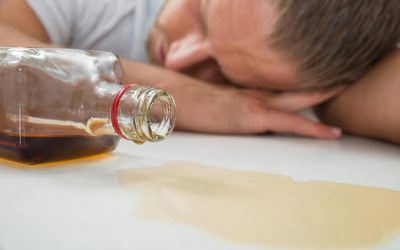What are the physical signs of alcoholism?
Data da publicação: 22 de março de 2022 Categoria: Sober livingAbout 2% of American adults have liver disease, and therefore are at risk of developing cirrhosis. However, those who drink too much alcohol, those who are overweight and those with viral hepatitis are at a greater risk. A wide range of other conditions and diseases can cause cirrhosis as well. For example, iron absorption from the food in the gastrointestinal tract may be elevated in alcoholics. Iron levels also can rise from excessive ingestion of iron-containing alcoholic beverages, such as red wine. The increased iron levels can cause hemochromatosis, a condition characterized by the formation of iron deposits throughout the body (e.g., in the liver, pancreas, heart, joints, and gonads).
- Alcohol also impairs the body’s ability to clot blood, leading to potential bruises from even minor injuries.
- As a result, the unfiltered toxins in the blood can affect blood vessels, making them more prone to rupture and leading to easy bruising.
- Secondly, alcohol acts as a vasodilator, causing blood vessels to relax and expand.
- Bruises are typically surface injuries that heal on their own without medical attention, and people can treat them safely at home.
- However, alcohol can increase the likelihood and severity of bruising in all skin types.
- When people use the term “alcoholism,” what they are really referring to is an alcohol use disorder, which is the clinical term for an addiction to alcohol.
Are there specific areas of the body where alcohol-induced bruising is more common?

The blood vessels become more fragile and are more likely to break and rupture, resulting in the formation of bruises. Alcohol impairs coordination, weakens blood vessels, and affects the liver’s ability https://ecosoberhouse.com/ to produce clotting factors. These combined effects increase the likelihood of bruising after drinking alcohol.
People on Blood-Thinning Medications

Cirrhosis is when normal liver tissue is replaced by scar tissue, which causes the liver to lose its ability to function well. Alcohol can have a damaging effect on many aspects of our lives, even if we only consume it in small amounts. For people who develop an addiction, the effects of alcohol on the body and mind can be significant.
- Alcoholism is a colloquial term for alcohol addiction or alcohol use disorder.
- But when you bruise, your vessels are literally injured or broken in a sense, and blood pools around those vessels and rises to the skin.
- If you’re struggling to control your drinking or are worried about the health effects, reach out for professional help.
- When a person gets a bruise, some sort of injury crushes blood vessels, but the skin does not break and cause external bleeding.
Can alcohol consumption make bruises more painful?

A chronically damaged liver may not produce the proteins required for coagulation. Alcohol is a blood thinner, which means it affects the platelet count and quality in people who drink too much. Alcohol can change circuitry in the brain, and those changes can make it difficult for you to curb an alcohol habit. You may attempt to commit to cut back on your drinking marijuana addiction but may find that you can’t resist the temptation to drink for more than a day or two. The brain changes brought about by alcohol could make clear thinking difficult, and that could make it hard for you to stick to your commitments even if you want to do so.
- Often, bruising after drinking is a result of falling or bumping into something.
- While the bruises themselves may not be dangerous, they can indicate underlying health issues related to alcohol consumption.
- The type of alcohol consumed does not significantly affect the likelihood of bruising.
- Liver disease, often caused by long-term alcohol misuse, can further contribute to easy bruising.
Binge drinking (alcohol) and Easy bruising: Common Related … – WebMD
This is because a damaged liver may not produce the proteins required for coagulation, resulting in coagulopathy, or impaired blood clotting. Vitamin C and K deficiencies, which can be caused by alcohol abuse, also contribute to easy bruising as these vitamins aid in wound healing and clotting. In individuals with chronic alcoholism, distinct nail changes can occur, notably koilonychia and Terry’s nails. Koilonychia, or spoon-shaped nails, is characterized by concave, scooped-out nail surfaces. It often indicates iron-deficiency anemia or liver disease, both alcohol and bruising common in alcoholics due to poor nutrition and liver dysfunction. These nail changes are considered clinical markers and can be indicative of underlying health issues related to excessive alcohol consumption.

